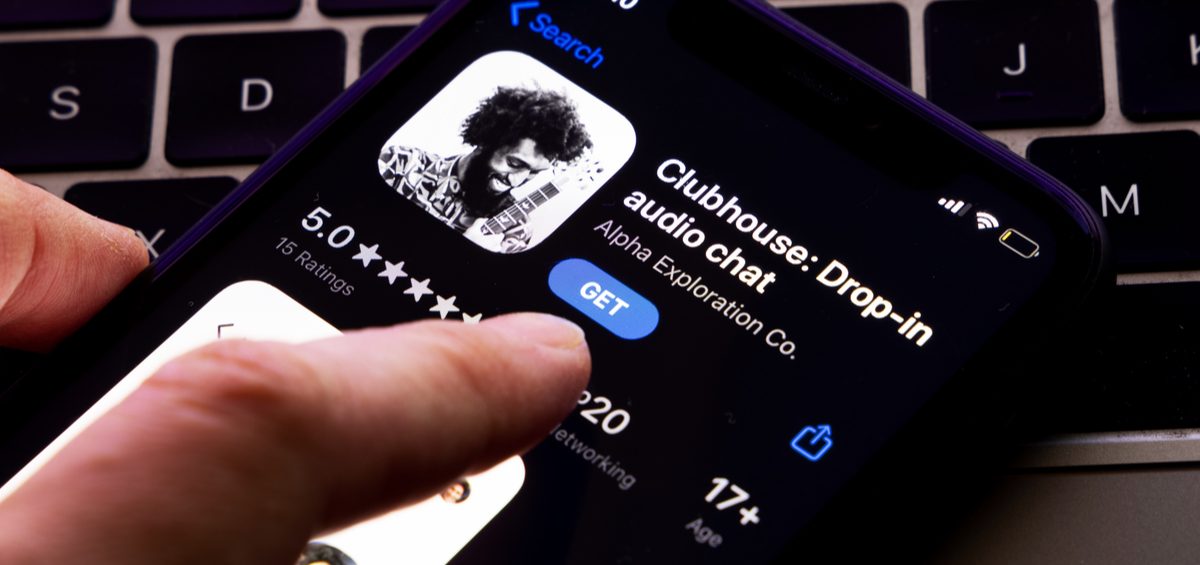By now you’re probably aware of the latest social media phenomenon: Clubhouse. Maybe you heard that it’s Elon Musk’s new favorite place to hang out. Or that it’s reaching the top of the Apple app store. Or that it’s banned in China.
What you may not know is that Clubhouse isn’t like most other social media networks. It’s incredibly… simple. There are no news feeds carefully curated by algorithms, and no sophisticated face filters. Instead, it’s just some people talking, and other people listening. Call it an audio social network. Already, the app is worth an estimated $100 million, has amassed 2 million active users, and has nearly 10 million downloads — all despite being in beta.
So how did an app that’s basically live podcasts become cooler than Snapchat and more interesting than Twitter? Well, people do love to talk. But Clubhouse’s own marketing has been just as clever as its conceit. Here’s a closer look:
It’s exclusive (for now)
Few things drive popularity more than exclusivity. And Clubhouse is just that — exclusive. While you can join most other social networks with nothing more than an email address, Clubhouse is invite-only. Launched in April 2020, Clubhouse only accepts new users who have been personally invited by existing ones.
The exclusivity is so the app can scale slowly and steadily. But there’s another upside: hype. “The app’s invite-only system could’ve siloed its burgeoning popularity within certain social circles, but exclusivity became crucial in cultivating general intrigue,” explains Vox.
It’s attracting top influencers
Any marketer will tell you that who uses your product is just as important as how many people do. And Clubhouse has mastered the art of influencer marketing. Everyone from Drake to Ashton Kutcher to Kevin Hart uses Clubhouse. Elon Musk has made appearances, too — and his next one may be with Kanye West.
The result of all this? “Members can feel like they are either eavesdropping on conversations or exchanging ideas with power players and celebs — for free,” explains USA Today.
Brands can use it wisely
We all know attention is scarce online. The constant clutter of tweets, digital ads, news articles, and other content means audiences are more and more selective. Alternatively, Clubhouse offers a break from busy screens and short attention spans. Writes AdWeek in an article headlined “Brands Should — and Will — Love Clubhouse”: “The platform is special. It allows for deep engagement, conversation, even intimacy. What director of social media out there doesn’t want that? Earning 60 seconds of your audience’s attention on TikTok or Instagram is nice. Earning 60 minutes of their time is something different.”
So how might brands use Clubhouse? Sharing news and profiling executives are just two possible avenues, suggests PR Daily.
Its timing is perfect
Clubhouse came online just as everything offline was shutting down. When it debuted in April 2020, the pandemic was closing movie theaters, concert halls, and just about every other venue. So many of us were desperate for social interaction, and Clubhouse delivered.
Explains AdWeek: “Speakers are ‘on stage’ and audience members listen in. If they have a question, they can raise their hand, and the moderator might invite them onstage to ask it. Some of these rooms have hundreds of people tuning in at once.”
This dynamic isn’t possible offline right now, so Clubhouse brought it online. One writer recently described Clubhouse as “a never-ending trade convention” — remember those?
Perhaps the most telling sign of Clubhouse’s success is the imitation it’s inspiring among competitors. “Facebook is rumored to be building a similar product,” reports Fast Company, “and Twitter began testing its own audio service in December.”
This much is certain: marketers can learn from Clubhouse’s strategy. And they should also start thinking about how Clubhouse fits into their own marketing strategy.


